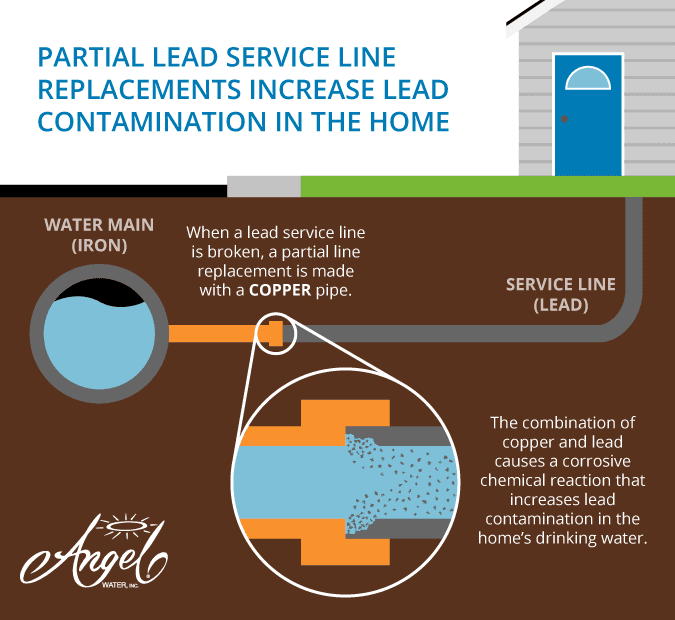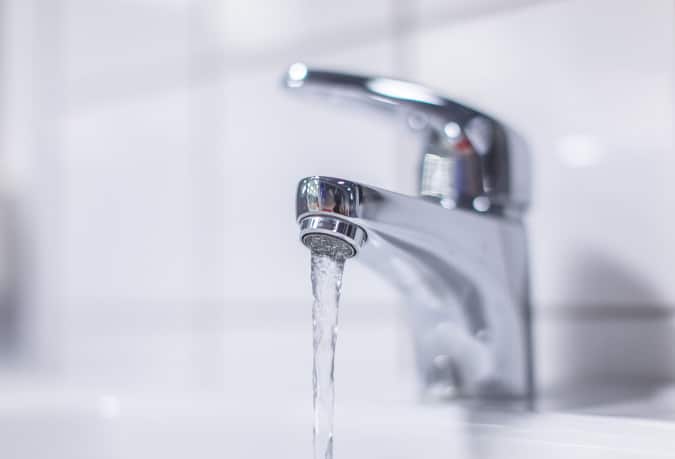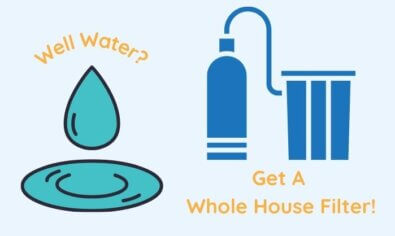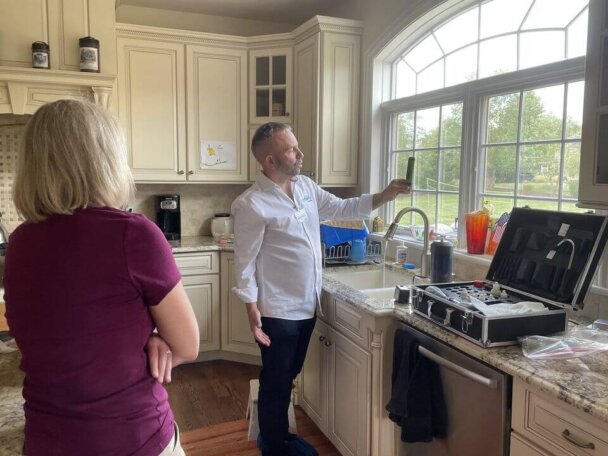The Problem with Partial Lead Service Line Replacements in Chicago

How Chicago’s Partial Lead Service Line Replacements Worsen the Contamination Problem
In case you hadn’t heard, many parts of Chicago have a problem with lead contamination in their water. This issue mainly stems from the fact that the city hasn’t replaced a lot of its old lead service lines. Many of these lines were installed in the early 1900’s and were never
meant to last this long. So, it’s no wonder they’re breaking down and depositing lead in the water.
Clearly, the time has come to replace these old pipes. But what if we told you there was a problem with how the city has been replacing them?
What if we told you this practice was actually making the lead problem worse? Unfortunately, this is the problem with partial lead service line replacements (PLSLR). In this post, we will explain what a PLSLR is, why it is dangerous, and what you can do to defend your health.
Key Takeaways:
- A PLSLR is the practice of replacing a portion of a lead service line with copper piping.
- PLSLR’s have been shown to increase the amount of lead in a home’s drinking water.
- Chicago should be doing more to urge its citizens away from getting PTSLR’s.
- Chicagoans can defend themselves against partial replacements by raising awareness about the issue and investing in a quality water filter.
What are Partial Lead Service Line Replacements?
A partial lead service line replacement often occurs during water main maintenance. Often, city workers will accidentally damage the lead service line that leads from the water main to a home. To fix it, they will replace the broken lead piping with copper piping.
On the surface, this practice of getting rid of the lead pipes may sound good. After all, lead pipe replacement is what we want, right? Unfortunately, as the name of the procedure indicates, this is only a partial replacement.
The reason it is only partial is the workers can only replace the portion of the service line that goes from the water main to the property line. Beyond that, it is the property owner’s responsibility to fund any further replacement.
However, for various reasons we will discuss, most property owners don’t opt for any further replacement.
Consequently, many homes in Chicago are getting water from service lines that are part copper and part lead. And as we will see, this puts their health at serious risk.

Why is a PLSLR Dangerous for a Chicago Household?
There are many problems with partial service line replacements. The most obvious issue is they don’t fully get rid of the lead piping. Any technique that leaves Chicago residents at risk of ingesting lead is simply not good enough. After all, lead exposure can lead to all sorts of terrible health problems, including kidney disease, anemia, and heart problems.
Not only does a PLSLR leave lead behind, but it can also increase the amount of lead contamination. It typically does this in a couple of ways:
- The process of partial replacement can damage the lead pipe. As workers bang on the pipe to add the copper section, it can dislodge lead pieces and damage the pipe’s protective coating. As a result, the water that flows through it initially will collect a lot of lead and bring it into the home.
- The combination of copper and lead causes a chemical reaction. It turns out that lead and copper don’t interact well together. The combination of the two leads to a corrosive reaction that breaks off even more lead from the pipe.
So, as you can see, only partially replacing a lead pipe does little to improve the situation for homeowners. Instead, it typically increases the amount of lead contamination in their drinking water for weeks or months afterward.
This contamination wouldn’t be as much of a problem if the citizens of Chicago were aware of it. However, as we will discuss now, Chicago isn’t doing nearly enough to make them aware.
What is Chicago Doing About This Problem?
Now that you understand the problem with PLSLR’s, doesn’t it make you wonder why the city is doing it and how they’re getting away with it? The answer to those questions has to do with a couple of factors:
- The practice is technically legal.
- Most Chicagoans are either uninformed or unable to do anything about the problem.
Let’s dive deeper into both of those issues.
A Technically Legal Practice
There is nothing in federal, state, or local laws that prohibits a PLSLR. Therefore, the city is well within its right to replace the lead with copper outside the property line.
Illinois Water Utilities have been reporting some gross contaminants!
Check out the concerning contamination that has been reported by public water utilities in Illinois!

But that doesn’t mean they should.
For the sake of its citizens’ health, Chicago could be doing more to keep partial replacements to a minimum. For example, the city could encourage its citizens to replace the lead piping on their side of the property line and provide assistance to do so.
Many other cities already have programs in place that assist their citizens, including nearby Elgin, IL. Not only does Elgin’s program raise awareness of the issue, but it also gives access to helpful resources. In this way, the city is proactively combatting the lead problem.
Uninformed or Underequipped Chicago Residents
Chicago, on the other hand, continues to do very little to help its residents with their lead service lines. In fact, many Chicago residents don’t even know they’ve had a PLSLR because the city is not required to tell them. The most the city will do is tell residents to flush their water for ten minutes before drinking it. This advice is not nearly enough to keep lead exposure from occurring.
Furthermore, even if citizens are aware of the problem with PLSLR’s, they often can’t afford to do anything about it. This is because lead pipe replacement typically costs thousands of dollars. Chicago could help its citizens with the financial burden by starting a loan program as Elgin has. However, it doesn’t look like this will happen anytime soon.
In sum, Chicagoans are largely on their own when it comes to combatting the effects of partial lead service line replacements. Fortunately, there are steps citizens can take to protect their health.

What Should Residents Do to Protect Their Health?
We would encourage all Chicagoans concerned about this trend to take action on a couple of fronts: publicly and in the home.
Raising Awareness Publicly
There are many ways citizens can make their voice heard on this issue. First, they can tell their friends and neighbors about the dangers of partial lead service line replacements. After all, if the city is not going to educate them, it’s up to its residents.
Beyond educating each other, Chicagoans should also call on city officials to do more about the problem. Furthermore, they can support political candidates committed to doing more about the issue.
Being Safe in the Home
Of course, Chicagoans shouldn’t just wait around for the situation to get better. After all, there are steps they can take right now to keep their drinking water clean.
While the city recommends flushing water for ten minutes before use, we would caution people away from that because of how much water it wastes.
Instead, we would recommend investing in a quality whole house water filter. The proper filtration equipment can remove lead and other contaminants and leave homeowners with the clean water they need for a healthy life.
Have Questions About the Situation in Chicago?
We hope this article has helped you understand the problem with partial lead service line replacements. If you live in Chicago and have any questions about lead in your water, please give us a call! Our licensed professionals would be happy to answer your questions and help you keep your water safe!
Interested in a Water Softener System for Your Home?
You don’t have to live with a dry, itchy scalp and brittle hair anymore! It would be our pleasure to help you find the right water softener to make your showers enjoyable again.
Please give us a call at (847) 382-7800 or visit our water softener page to learn more.




